Every 48 hours, one woman or girl is killed in Canada. Indigenous women aged 15 years and older, however, are 3.5 times more likely to experience violence than non-Indigenous women.
It is staggering stats like these and similar trends in other countries that have prompted the United Nations to call sexual and gender-based violence “the preventable pandemic.”
This issue had long been weighing on the minds of Raven Lacerte and her father Paul when they went on a traditional moose hunt in Carrier territory in North-Central B.C., near Highway 16, and came home with a plan to do something about it.
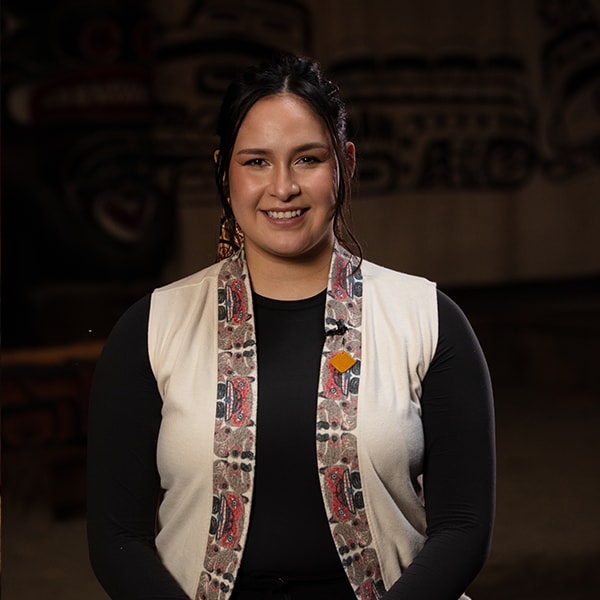
Photo: Raven Lacerte, Co-Founder of the Moose Hide Campaign
Credit: Moose Hide Campaign
That stretch of road is also known as the Highway of Tears — named for the dozens of mostly Indigenous women and girls who have gone missing or have been murdered along the route.
Lacerte, a member of the Lake Babine First Nation, says she and her three sisters grew up knowing the likelihood of experiencing some form of violence was much higher because they are women, as well as visibly Indigenous.
On that 2011 trip, Lacerte and her father were inspired to create the Moose Hide Campaign to raise awareness and invite the broader community — including men and boys — to work together to end gender-based violence. They created pins with small squares of moose hide for people to wear as a symbol against gender-based violence.
“Our hope was to be able to break the cycles that exist in our communities and to change the way that we think and feel about women and children, especially Indigenous women, and understand where those things are coming from,” said Lacerte.
The campaign is rooted in traditional Indigenous ways of learning and being. Moose have been an important source of food and clothing for Indigenous communities, and the moose hide pin also signifies reverence for tradition and undoing the effects of Residential Schools.
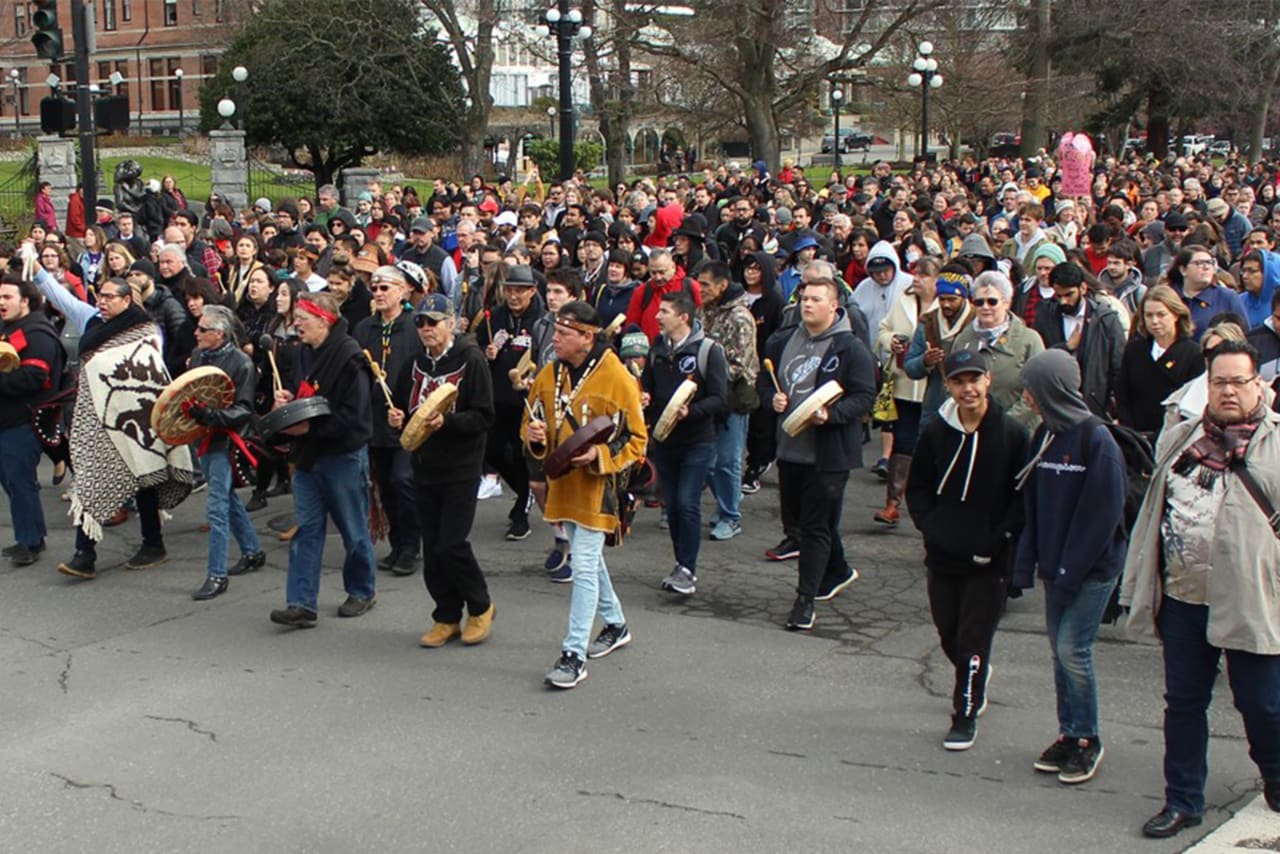
Credit: Moose Hide Campaign
“In my community, we came from a matrilineal society. And so the women in our community were held up in such high regard. And so somewhere along the way, we lost that.”
The Moose Hide Campaign started out as a grassroots effort with thousands of handwritten cards and pins that Lacerte and her family made, tanning and cutting the hide themselves. It has since grown into a national movement with more than six million pins distributed, free of charge, across Canada to raise awareness and generate open dialogue about the longstanding issue.
The organization’s impact research shows that every moose hide pin represents at least five conversations about gender-based violence.
“We think of it as medicine and so we've made a forever promise from that moment to never charge for the moose hide pins,” says Lacerte, noting that they also have a synthetic version for those who do not want to wear animal hide. “We want it to be as easy and as accessible to folks as possible.”
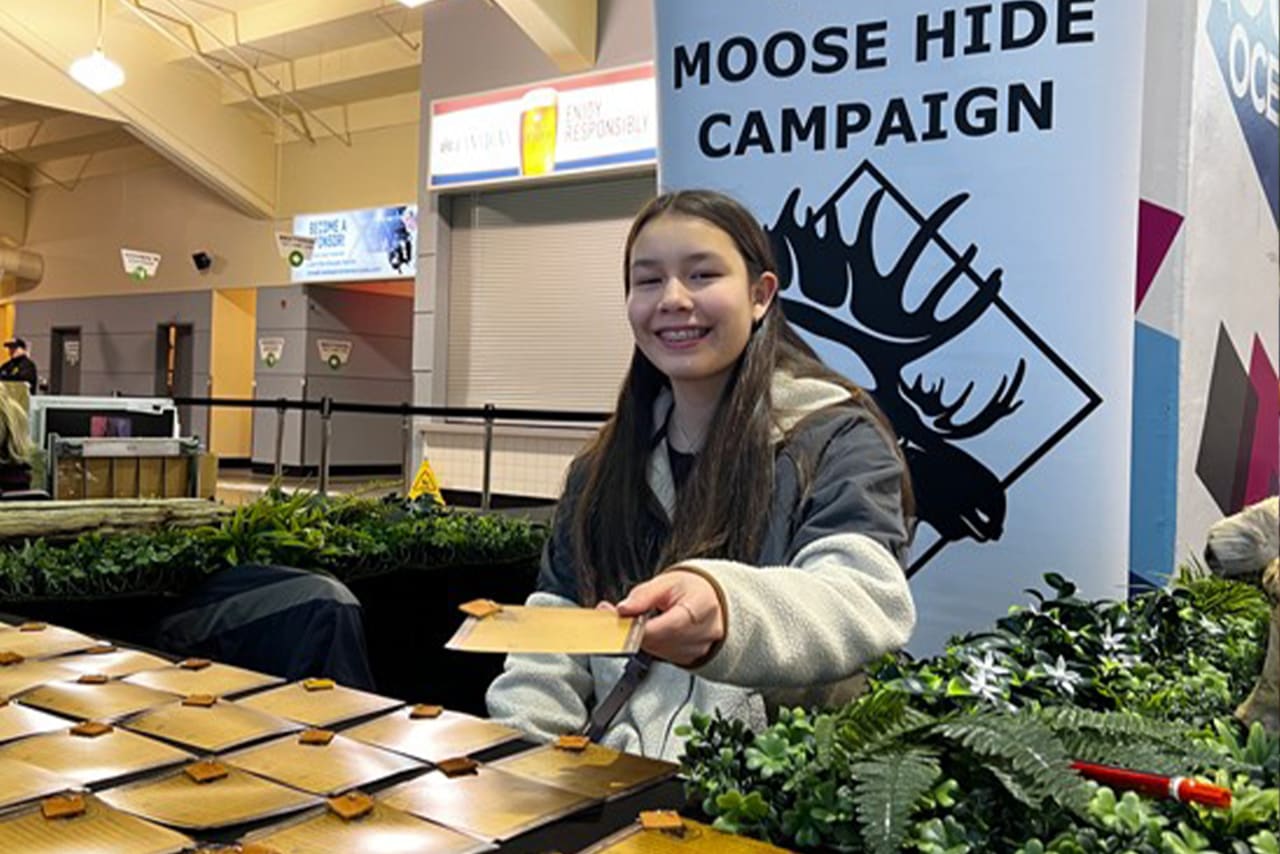
Credit: Moose Hide Campaign
Moose Hide Campaign Day is an annual event in May when the organization calls on Canadians to wear the pins and gather — whether that’s virtually or in their own communities — to host events focused on the issue and exploring solutions. Participants are also called on to fast, a traditional practice in Indigenous culture, for the day or in whatever way works for them, said Lacerte.
This year, it will be held on May 16. Events include a livestream from Victoria, B.C. featuring Lacerte and other speakers such as Elders, Knowledge Keepers and those sharing their personal experiences with gender-based violence. Last year, half a million people registered to watch the livestream.
Walks, workshops, discussion circles and other events will be hosted by various communities, schools and groups across Canada.
“It's incredible to see Canadians from coast to coast to coast taking on this medicine in over 2,500 communities now that have taken the pledge campaign,” Lacerte said. “To invite that many people into a ceremony is a really beautiful thing and fills me up with a lot of hope too.”
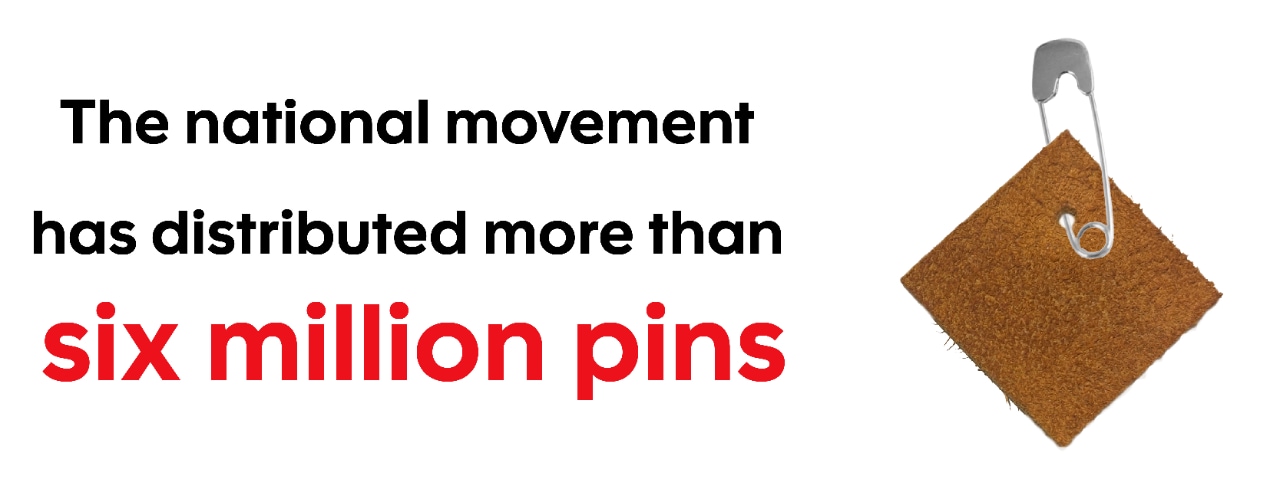
Source and image credit: Moose Hide Campaign
Scotiabank is supporting the Moose Hide Campaign with a $150,000 community partnership investment over three years. The investment is connected to reconciliation and supports broader efforts underway inside Scotiabank to formalize its journey to develop a Truth & Reconciliation Action Plan. Participating in the Moose Hide Campaign’s movement is part of engaging the Bank’s networks to advocate for an end the crisis of Missing and Murdered Indigenous Women, Girls, and Two Spirit (MMIWG2S+) and the root causes of violence. The funding will also help Moose Hide to extend their outreach and gather one million people to fast at Moose Hide Campaign Day by 2028. As well, frontline staff at Scotiabank branches will be provided moose hide pins to wear, leading up to the day of ceremony on May 16.
“We are committed to doing our part to end this crisis and raise awareness in our broader communities of the underlying root causes,” said Meigan Terry, SVP and Chief Sustainability, Social Impact and Communications Officer at Scotiabank. “That includes using our position of influence and leveraging our presence through our branches, to amplify and empower Indigenous-led partners such as the Moose Hide Campaign that are making a meaningful impact.”
When it first began, Moose Hide Campaign was focused specifically on inviting more men and boys to end violence against women and children, with a special focus on Indigenous women and children.
It became clear that an emphasis of men and boys was needed during a 2011 conference in Vancouver focused on ending violence towards women and children across Canada. The conference was attended by nearly 300 people but only four were men, said David Stevenson, the CEO of Moose Hide Campaign.
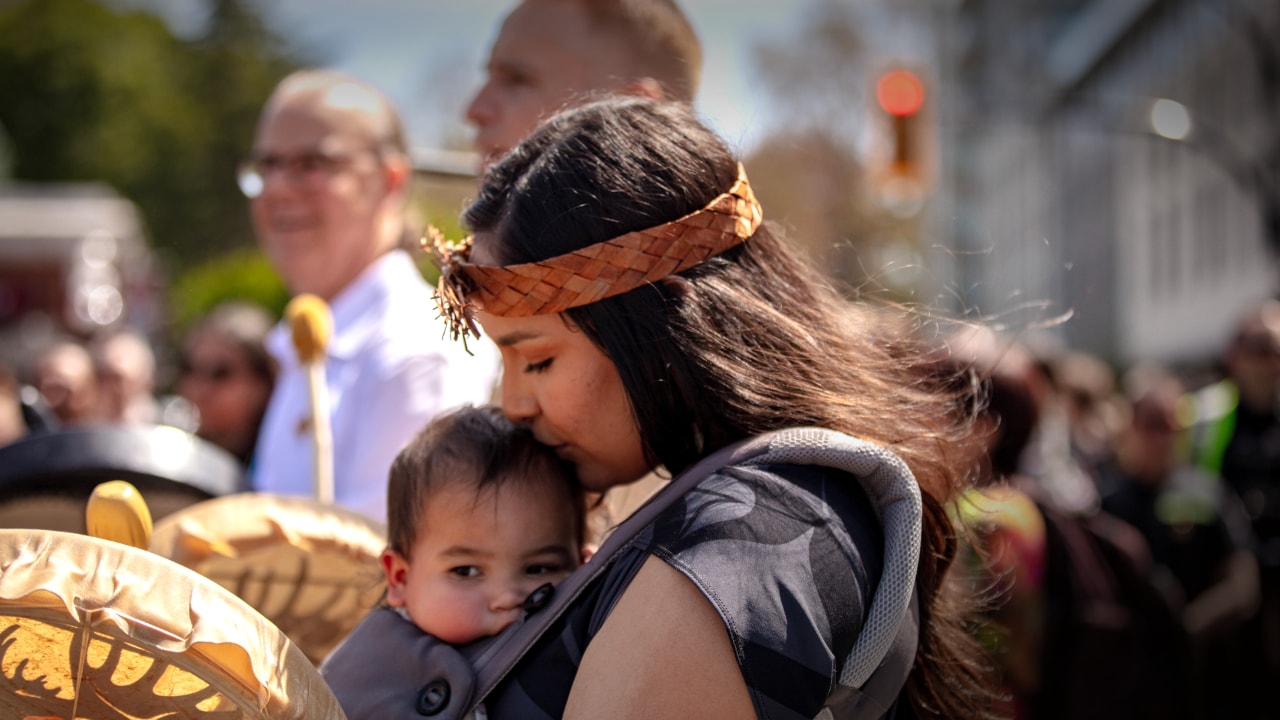
Credit: Moose Hide Campaign
He was one of the four men at the conference along with Raven’s father Paul, who would co-found the Moose Hide Campaign later that year.
Stevenson, who is of Irish, French and Haudenosaunee ancestry and has a long track record of advocacy for Indigenous peoples, has been involved with the Moose Hide Campaign since its beginning but took on the role of CEO in 2016.
“We wondered, where are all the men in this space?” said Stevenson. “What is going on that women are bearing the brunt of advocacy?”
Gender-based violence is a learned behaviour and is completely preventable, he added. The campaign’s approach is to call men and boys into the conversation, not call them out.
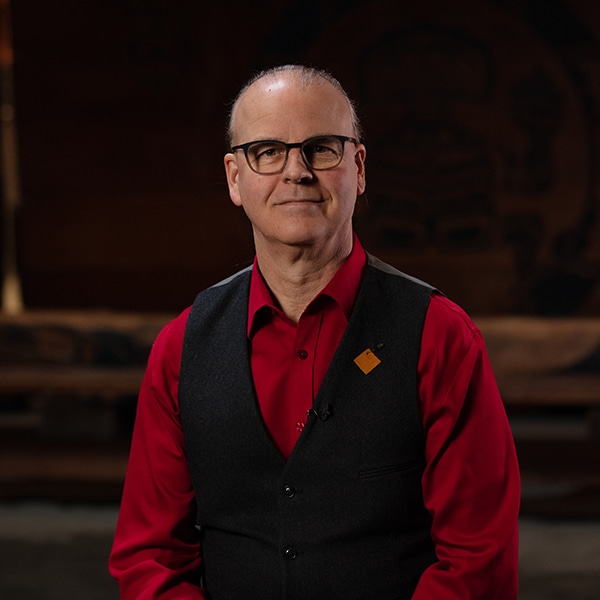
Photo: David Stevenson, CEO of the Moose Hide Campaign
Credit: Moose Hide Campaign
“It's really important for men to understand the impact on their daughters, their mothers, their aunts, their sisters. To make it real,” said Stevenson. “Let’s bring them into this conversation and find a healthy growth-mindset way of addressing this, rather than just punishing people.”
Statistics also show that Indigenous women and children are more likely to be victims of gender-based or intimate partner violence. For example, 61% of Indigenous women in Canada were more likely to have experienced intimate-partner violence in their lifetime, compared to 44% for non-Indigenous women.
The trauma that Indigenous people have experienced as a result of colonization has led to a lot of pain and hurt and unlearning of traditional ways, said Lacerte.
“There are some very real drivers for people in the Indigenous community, and I think those drivers are often very similar in the non-Indigenous communities as well,” she said.
Over time, the Moose Hide Campaign’s scope was broadened as people from different backgrounds and genders across Canada wanted to wear the moose hide pins and participate.
“We now call it an Indigenous medicine for the benefit of all Canadians,” said Stevenson. “It's for men, children and all those along the gender continuum. We’re creating space because of the awareness that we’ve gained over the years.”
Lacerte says the movement aims to bring everyone together, across genders, generations and both Indigenous and non-Indigenous people, to solve this devastating but preventable problem, said Lacerte.
“We need everyone,” she said. “We believe that we really need everyone to be part of this solution, together, if we're going to make any real change.”
For more information about how to order moose hide pins, to attend an event, and resources for your community, visit their website MooseHideCampaign.ca

